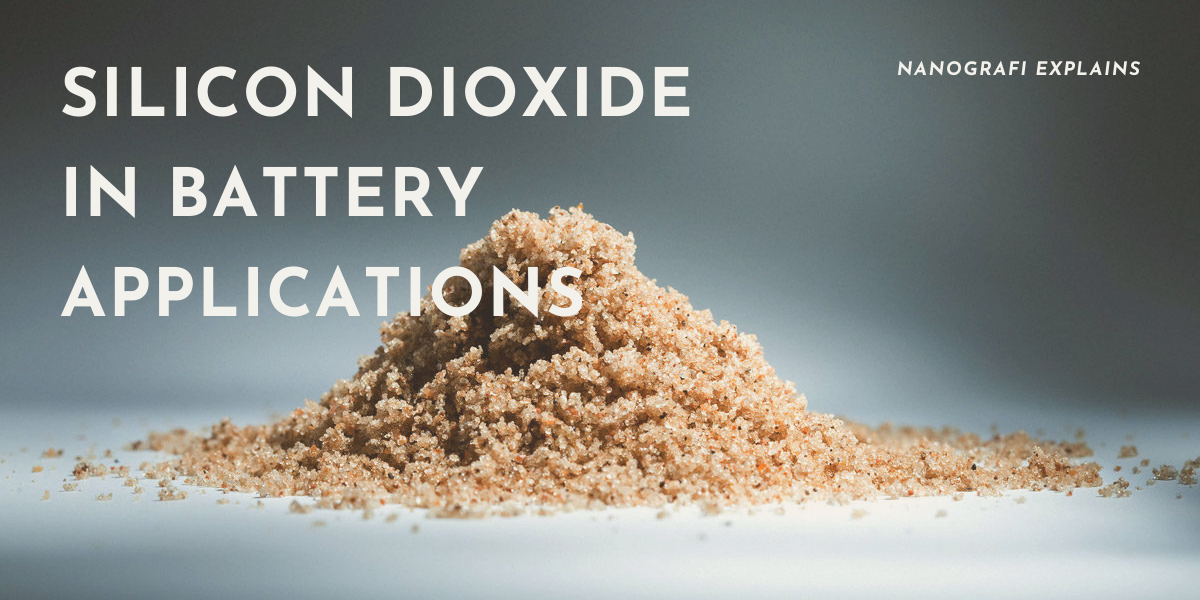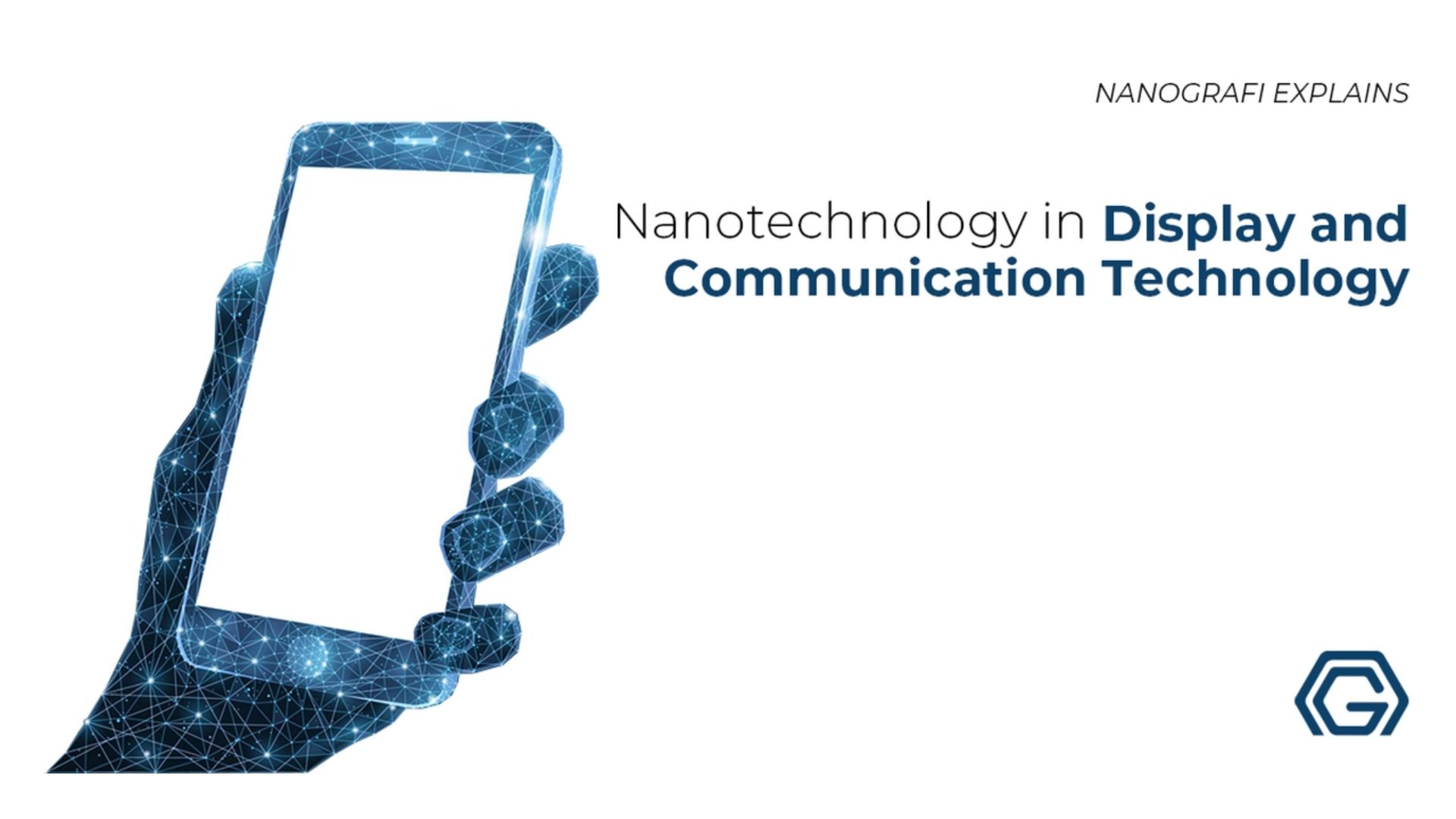Silicon Dioxide in Battery Applications
Silicon dioxide is a promising material for next generation battery technologies because of its high capacity and abundance. Especially Li-ion and Li-S batteries benefit from silicon dioxide and its composites for performance improvement.
The urgent need for improvement in energy storage technologies stems from rapid developments in electronic devices and electric cars. As these energy dependent systems continue to their impressive developments, they also become more and more energy-hungry. Hence, energy storage systems should show further development to meet the energy requirements of future technology. In this context, the use of silicon dioxide in battery applications have become a popular application.
Introduction
Up to now, the most widely commercialized batteries are Li-ion batteries with Li4Ti5O12 or graphite anodes. Even though these batteries show long cycle lives, they suffer from low capacity. The theoretical capacities for graphite and Li4Ti5O12 are 372 and 175 mAhg-1, respectively. Such capacities are inadequate for the energy requirement of novel technologies. As a result, studies taking different approaches to the energy storage problem have been coming up with different battery material combinations. As part of these studies, Si attracts attention because of its high theoretical capacity around 4200 mAhg-1. Even though this capacity excites researchers, the extreme volume expansion (approx. 400%) of pure Si hinders its effective use in anodes. Furthermore, the high production cost of nanostructured Si makes it unfeasible for mass production. Because of these problems with Si, studies have leaned towards the use of silicon oxides as anode materials. These studies mainly focus on the use of silicon oxide (SiO), silicon dioxide (SiO2), and the nonstoichiometric form of silicon oxides (SiOx).
Why Use Silicon Dioxide in Battery Applications?
Silicon dioxide is preferred since it is one of the most readily available materials found in the Erath’s crust. Silicon dioxide is available in nature in amorphous and crystalline structures. For example, sand or quartz is a crystalline form of silicon dioxide. On the other hand, amorphous silicon dioxide is commonly found in several different organisms such as plants. Studies show that bulk silicon dioxide has a theoretical capacity of approximately 1965 mAhg-1. However, bulk silicon dioxide is considered to be electrochemically inactive towards lithium. The reason for bulk silicon dioxide’s inactivity is the low Li ion diffusivity and poor electrical conductivity of this material. As the particle size decreases the diffusion pathway of Li ions shortens and electrochemical activity is promoted.
Because of its attractive properties, silicon dioxide is utilized in Li-ion and Li-S batteries to develop high capacity energy storage devices.
Silicon Dioxide and Its Composites for Li-ion Batteries
Silicon dioxide nanostructures can be used as the anode material by themselves. Among studies focusing on the use of pure silicon dioxide show that silicon nanoparticles provide high first charge capacities around 600 mAhg-1. An increase in the charge capacity can be observed up to 800-900 mAhg-1 after some charge/discharge cycles. Even though silicon dioxide nanoparticles show good results, the best achievement with silicon dioxide nanostructure is reported when silicon dioxide nanotubes are used in the anode. Silicon dioxide nanotubes provide first charge capacities as high as 1040 mAhg-1. Furthermore, studies show that silicon dioxide nanotube based anodes show impressive rate capability and cyclic performance. On the other hand, silicon dioxide nanospheres showed low anode performance compared to other nanostructures.
Because the electrical conductivity of silicon dioxide is quite low, composite materials are also considered for silicon dioxide based anodes. Commonly investigated composite materials in this area are SiO2/C composites. The high electrical conductivity of carbon improves the electrical properties. Furthermore, because of its strong structure carbon aids the volume expansion problems in silicon dioxide based anodes. Thus, SiO2/C composite based anodes show great cyclability. Especially porous SiO2/C structures are preferred for their advantageous structure. The porous structure of these composites inhibits volume fluctuations and allows rapid Li ion diffusion. Hence, improved rate capability and cycling stability are observed. Aside from porous or mesoporous composite structures, carbon coated mesoporous silicon dioxide showed promising results in terms of first charge capacities. Complex structures such as carbon core/mesoporous silicon dioxide/carbon shell composites can provide charge capacities as high as 1055 mAhg-1. Besides these composite structures, SiO2/C nanofibers, SiO2/C spheres, SiO2/graphene, SiO2/C hollow structures, SiO2/graphite, and SiO2/C/graphene spheres are investigated for Li-ion battery anode materials.
In some cases, Si is also incorporated into SiO2/C composites to benefit from the high capacity of Si. Several studies are utilizing Si/ SiO2/C composite as anode material for high performance Li-ion batteries.
Another solution to the low electrical conductivity of silicon dioxide is to use SiO2/metal composites. Incorporating metal particles into silicon dioxide based anode materials improves not only the electrical conductivity but also the electrochemical activity of the material. One of the conductive metals used to develop silicon dioxide composites is nickel. To utilize structural advantage these composites are used in the form of hierarchical hollow structures. Hollow spherical structure helps minimize the volume fluctuations while the nanosized thickness of the composite accommodates Li ion diffusion. Also, the electrical properties of such composites improve with the decreasing size of metal nanoparticles. The specific capacity of SiO2/Ni hollow sphere anodes can reach up to 650-700 mAhg-1. Aside from metals, metal oxides are also studied for silicon dioxide composite anode materials. For example, TiO2 is considered to be a promising composite material since it provides high cycling stability and suitable discharge potential. On the other hand, TiO2 based anodes show low capacity and rate capability. Thus, SiO2/TiO2 composites combine the best of these two materials and expected to yield high capacity and excellent cycling stability. Furthermore, TiO2 minimizes the volume expansion of silicon dioxide.
If you are interested in Nanotechnology in Display and Communication Technology,
you can read our blog post here.
Silicon Dioxide Composites for Lithium Sulfur Batteries
Lithium sulfur (Li-S) batteries are one of the most promising next-generation energy storage solutions because of their high energy density (2600 Whkg−1) and high theoretical capacity of sulfur (1675 mAhg-1). The low cost and abundance of sulfur is another attractive property of Li-S batteries making them more suitable for mass production. However, Li-S batteries suffer from the insulating effect of sulfur and its lithiation products such as Li2S and Li2S2, high volume fluctuations, and formation of long-chain polysulfide intermediates in the electrolyte, resulting in low coulombic efficiency, severe self discharge and poor cycle life. To address such disadvantages of Li-S batteries, studies use composite materials with high electrical conductivity and absorption capacities. In this context, silicon dioxide attracts attention due to its high polysulfide absorption capacity which leads to increased coulombic efficiency and cycle life. Because silicon dioxide has low electrical conductivity these carbon based materials are also used in combination with silicon dioxide because of its high electrical conductivity. Composite materials contain silicon dioxide, carbon, and sulfur with different structures have been investigated for high performance Li-S batteries. One of these structures is the yolk-shell structure which contains silicon dioxide in the core and carbon layer in the shell. This composite material shows great effects as the cathode host material of Li-S batteries. The resulting battery provides a high initial specific capacity of 1200 mAhg−1, superior rate performance (728 mAhg−1), slow capacity decay and anti-self-discharge feature. Similarly, graphene/S/SiO2 composites are also utilized to achieve high performance Li-S batteries. These types of Li-S cathode material resulted in high initial capacities around 700 mAhg−1 and low capacity decay. Composite materials that involve carbon back and silicon dioxide are also investigated as Li-S battery cathode material and a high initial capacity of around 1100 mAhg−1 is achieved. All in all, studies show that composite cathode materials with silicon dioxide and carbon based materials can be a promising alternative for further improvement of Li-S batteries.
Conclusion
With the increasing energy demand of novel technologies and the resulting need to develop better energy storage systems, studies have focused on developing improved materials for high performance anode and cathodes. Silicon dioxide is one of the promising materials for the development of such materials. The high theoretical capacity and abundance of silicon dioxide attract attention in battery technologies. The use of silicon dioxide and its composites have especially attracted attention in Li-ion batteries and Li-S batteries.
Currently, Li-ion batteries suffer from low capacity. To address this problem, SiO2, SiO2/C composites, and SiO2/metal composites are used as anode materials. Such silicon dioxide based anodes show high initial capacities and good cycling stability.
On the other hand, SiO2/C composites are utilized to improve the cathode performance of Li-S batteries. Silicon dioxide attracts attention as the cathode material because of its high capacity and polysulfide absorption capacity. Improved coulombic effect, battery life, and capacity are observed for Li-s batteries with SiO2/C composite anodes.
All in all, silicon dioxide appears to be a promising material for next generation battery technologies. However, it is important to note that, further improvement is necessary for practical applications.
To get more information, you can visit Blografi.
References
- Liu, Z., Yu, Q., Zhao, Y., He, R., Xu, M., Feng, S., ... & Mai, L. (2019). Silicon oxides: a promising family of anode materials for lithium-ion batteries. Chemical Society Reviews, 48(1), 285-309.
- Lee, G., Kim, S., Kim, S., & Choi, J. (2017). SiO2/TiO2 composite film for high capacity and excellent cycling stability in lithium‐ion battery anodes. Advanced Functional Materials, 27(39), 1703538.
- Rajkumar, P., Diwakar, K., Subadevi, R., Gnanamuthu, R. M., Wang, F. M., Liu, W. R., & Sivakumar, M. (2021). Graphene sheet-encased silica/sulfur composite cathode for improved cyclability of lithium-sulfur batteries. Journal of Solid State Electrochemistry, 25(3), 939-948.
- Wang, R., Wang, K., Gao, S., Jiang, M., Zhou, M., Cheng, S., & Jiang, K. (2017). Rational design of yolk–shell silicon dioxide@ hollow carbon spheres as advanced Li–S cathode hosts. Nanoscale, 9(39), 14881-14887.
Recent Posts
-
Turning Noise into Power: Energy Harvesting with Piezoelectric Nanogenerators
Ambient acoustic energy, once an untapped resource, is now being converted into sustainable electric …5th Mar 2025 -
Holey Super Graphene in Li-ion Batteries: Next Generation of Energy Storage
Holey Super Graphene (hG), also referred to as “holey graphene,” is redefining li-ion ba …7th Feb 2025 -
Future Communication with 5G Technology and Advanced Materials
5G technology opens the doors to a new era in communication with faster connection speeds, low laten …6th Feb 2025







